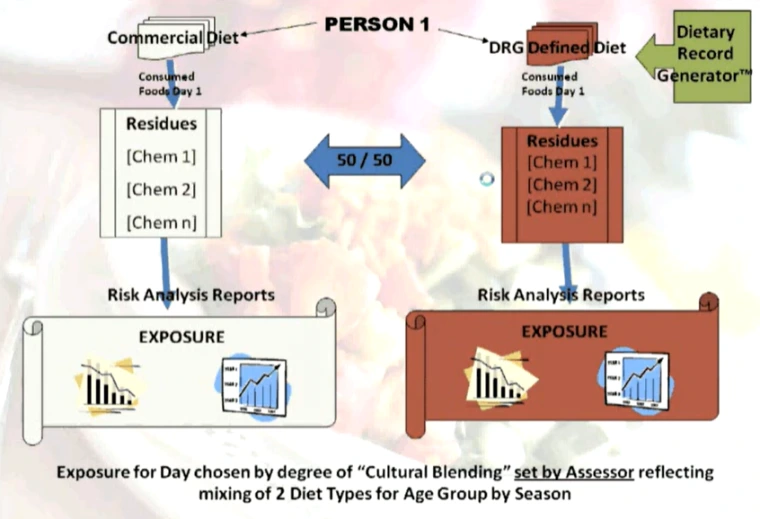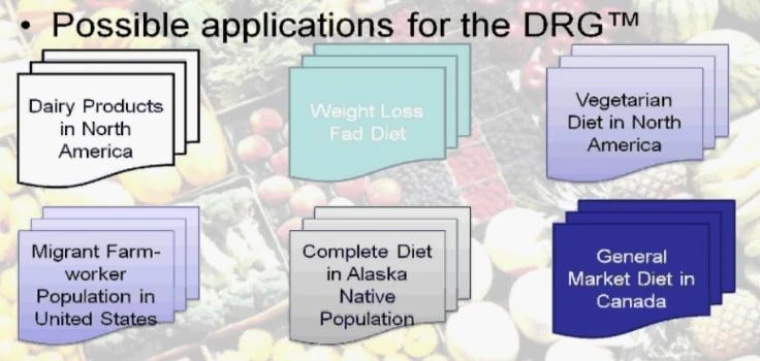LifeLine™ has developed multiple assessment models addressing aggregate and cumulative risk concepts, exposure-based chemical prioritization, dietary and activity profiling for unique communities (including tribal and ethnically defined communities) and post-disaster chemical hazard profiling for communities. This work has been supported by the National Institutes of Health (especially the National Institute of Environmental Health Sciences), the US Environmental Protection Agency, the Consumer Product Safety Commission as well as several state agencies, especially those of Alaska and California. LifeLineTM provides scientific support for novel exposure and risk assessment for consumer product safety, food safety and environmental protection.
In 2023, The LifeLine™ Group donated their exposure and risk assessment tools to the University of Arizona. These tools are freely-available to community groups and exposure science and risk assessment researchers for use. To request access to a software tool or a dietary profile dataset, please send an email to swehsc-irth@arizona.edu
Current Exposure and Risk Assessment Software:
This exposure and risk assessment software considers both dietary and activity (non-dietary) exposure pathways for user-defined community-specific scenarios. Information supplied to the DRG and ARG software is configured for use in this software as the underlying parameters for the exposure and/or risk assessments. The user of this software is required to bring information about the chemical residues present in food(s), in the environmental media involved with non-dietary exposure, and a chemical’s hazard characteristics to this application in order to conduct an assessment. Furthermore this software: accommodates consideration of seasonal and age group dependent scenarios.
This is dietary exposure and risk assessment software which utilizes community-specific dietary files (from the DRG™). The user of this software is required to bring information about the chemical residues present in food(s) and a chemical’s hazard characteristics to this application in order to conduct an assessment. Furthermore, this software: 1) accommodates consideration of seasonal and age group dependent differences in dietary patterns; 2) allows for “menu blending” of commercial (as represented by the CSFII) and unique diets (as represented by the dietary file from the DRG™) which is observed in some communities; and 3) recognizes preparation method and storage effects on chemical residues found in foods.

The Dietary Record Generator™ (DRG): This is a stand-alone software tool that accepts information from a wide range of sources about food and dietary habits and transforms them into a coherent simulated dietary file that can be imported into the LifeLine Customized Dietary Assessment Software™ for use during an exposure or risk assessment. The DRG™ provides several new opportunities to the user including: 1) use of dietary information relevant to unique population groups; 2) coherent integration of dietary data from several sources including conventional dietary studies, studies of shelf disappearance data or harvest information, or information from expert community members regarding consumption, preparation, storage, and use patterns relevant to the community; 3) application of data to specific age groups and by season; 4) the opportunity to upgrade or amend existing dietary databases as better information becomes available, or food availability and habits change; and 5) the opportunity to simulate a complete dietary profile or to simulate a dietary profile only for food(s) of interest.

The Activity Record Generator™ (DRG): This is a stand-alone software tool that accepts information from a wide range of sources about people’s interactions with non-dietary media in their environment and the dynamics of exposure to chemicals in those media. This information is transformed into a coherent simulated activity record file that can be imported into the LifeLine Community-Based Exposure/Risk Assessment Software™ for use during an exposure or risk assessment. Users can upgrade or amend existing activity records files as better information becomes available, or different patterns of exposure are to be considered.
P3M allows records to be retrieved randomly from the database with specification of constraints on age, sex, and ethnicity. The database and accompanying software provide a convenient tool for parameterization models of interindividual variation in human pharmacokinetics.
This is a source of data for human physiological parameters where:
1. The parameter values for an individual are correlated with one another, and
2. Values of parameters capture interindividual variation in populations of a specific gender, race, and age range.
Some of the example parameters investigated include:
1. volumes of selected organs and tissues;
2. blood flows for the organs and tissues; and
3. the total cardiac output under resting conditions and average daily inhalation rate.
These parameters are expressed as records of correlated values for the approximately 30,000 individuals evaluated in the NHANES III survey.
Compendiums of Dietary Profiles Available
The Alaska Compendium is a collection of five distinct dietary profiles seen in Alaska, and captured through use of the DRGTM software. The profiles represent the unique diets of Alaska Native populations consuming traditional and subsistence foods within five “ecological-cultural zones” as defined by the Alaska Department of Fish and Game. The ecological cultural zones represent cultural and geographic distinctions and include:
- Arctic-Subarctic Coast/Yupik-Inupiaq
- Aleutian Pacific/Auet-Alutiiq
- Subarctic Interior/Athabaskan
- Southeast Alaska Coast/Tlingit-Haida
- Urban-Urban Periphery
A dietary file representative for each of these ecological cultural zones and supporting documentation is available. The files may be used directly in a dietary exposure or risk assessment using the CDAS™, or they can be modified using the DRG™ software to more closely represent a specific community of interest before being used for a dietary exposure or risk assessment
The Arctic Canada Compendium is a collection of nine distinct dietary profiles seen in Arctic Canada, and captured through use of the DRGTM software. The profiles represent the unique diets of Arctic Canada populations consuming traditional and subsistence foods within nine “ecological-cultural zones” represent cultural and geographic distinctions. They include: Dehcho, Dogrib, Gwich’in, Inuvialuit, Nunatsiavut, Nunavik, Nunavut, Sahtu, and Yukon. A dietary file representative for each of these ecological cultural zones and supporting documentation is available. The files may be used directly in a dietary exposure or risk assessment using the CDAS™, or they can be modified using the DRG™ software to more closely represent a specific community of interest before being used for a dietary exposure or risk assessment.
This compendium contains the dietary file representative of Mexican influenced communities, especially in the Southwest US. Attendant documentation describes the process and logic followed in the construction of the Dietary Record Generator files as well as extensive referencing for those files. The separate Excel spreadsheets contain the compiled data used to determine relevant consumption parameters. The files may be used directly in a dietary exposure or risk assessment using the CDAS™, or they can be modified using the DRG™ software to more closely represent a specific community of interest before being used for a dietary exposure or risk assessment
This compendium contains the dietary file representative of two distinct demographic/ethnic and cultural identities: the Navajo and Apache. Attendant documentation describes the process and logic followed in the construction of the Dietary Record Generator files as well as extensive referencing for those files. The files may be used directly in a dietary exposure or risk assessment using the CDAS™, or they can be modified using the DRG™ software to more closely represent a specific community of interest before being used for a dietary exposure or risk assessment.
